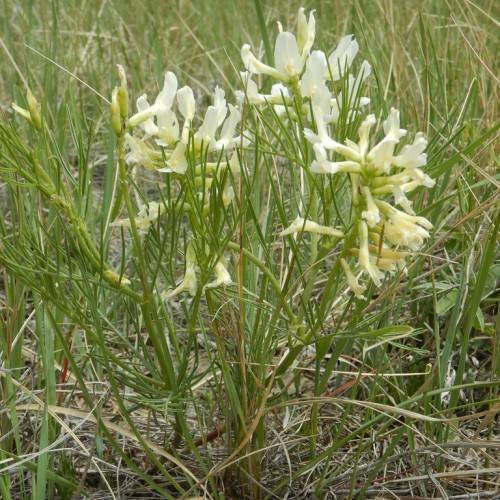
Narrowleaf Milk Vetch
Astragalus pectinatus
Watering:
Minimal
Hardiness Zone:
Sun:
full sun,part shade
Fruits:
Fruits Ready In Fall
Leaf:
Yes
Growth Rate:
Low
Drought Tolerant:
Yes
Salt Tolerant:
Yes
Care Level:
Medium
watering
Cooper's Milkvetch thrives in well-drained, sandy to loamy soils and requires full sun. The ideal time to water Cooper's Milkvetch is in the mid-morning. The frequency of watering will depend on the climate and season. Water your plant if the top inch of soil is dry. In the summer months, it may need water 2 to 3 times per week. During the cooler, winter months, water every 10-14 days. Additionally, the area around Cooper's Milkvetch should be kept weed-free to reduce competition for water and nutrients.
sunlight
Cooper's Milkvetch is native to south-central and north-central United States, from Washington to Montana, southward to Pennsylvania, and extending westward to Texas. This plant species prefers light, well-drained soils in dry areas, so it's important to ensure that the plant is exposed to enough sunshine. The best amount of sunlight for Cooper's Milkvetch is 8-10 hours a day, ideally from morning until late afternoon. Partial shade should be avoided when possible, as too much shade may reduce the quality of the plant. Additionally, exposure to afternoon sun is especially beneficial to this species' unique flower blooms.
pruning
Cooper's Milkvetch should be pruned in late winter or early spring before the active growing season. Pruning should be done to open the shrub up to better air circulation and to prevent overcrowding of branches, which can lead to thinner foliage. Cut back stems that are too large back to the nearest lateral branch, and thin out any branches with multiple, smaller stems. When pruning, look for crossing branches and remove any dead or diseased stems and cut these back to the ground. Be sure to leave enough growth behind when pruning so that the shrub is not completely denuded of foliage. This should help to promote new growth and healthier plants.
